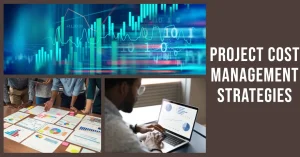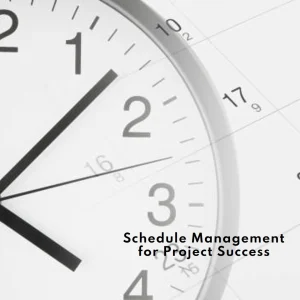To find out how Artificial Intelligence is changing the Project Management landscape, you may enjoy reading this article https://www.shaunstoltz.com/did-artificial-intelligence-just-change-everything-about-project-management/
I. Introduction
Hey there, fellow project management enthusiasts! Have you ever found yourself grappling with the challenge of managing change in your projects? You’re not alone. Change is inevitable, and as project managers, we must constantly adapt to ensure our projects stay on track and achieve their objectives. That’s why I’m so excited to introduce you to the 7 R’s of change management—a powerful framework that can help you navigate the complexities of change with greater ease and confidence.
In my years of experience as a project manager, I’ve witnessed firsthand the impact that effective change management can have on the success of a project. Change is often viewed as a daunting challenge, but when approached with the right mindset and tools, it can be an opportunity to drive innovation and growth. That’s where the 7 R’s come in. This easy-to-remember framework provides a structured approach to managing change, ensuring that you and your team are well-prepared to tackle any obstacles that come your way.
In this blog post, we’ll take an in-depth look at each of the 7 R’s, exploring their relevance to project management and discussing practical applications to help you maximize their benefits. So, buckle up and get ready for a journey of discovery and growth as we dive into the world of change management and unlock the power of the 7 R’s!
II. The 7 R’s of Change Management
Now that we’re all warmed up and ready to dive into the heart of change management, let’s explore each of the 7 R’s in detail. I’ll share my insights on their importance and provide examples to help you understand how they can be applied in real-life project scenarios.
A. Reason
- Definition: The first R, “Reason,” refers to the purpose or rationale behind a change. Why is the change necessary, and what are its expected benefits?
- Importance: Understanding the reason for change is crucial because it provides a clear direction and helps to ensure that everyone involved is aligned with the project’s objectives. It’s also essential for garnering stakeholder buy-in and support throughout the change process.
- Examples: Reasons for change may include addressing customer feedback, complying with new regulations, or improving efficiency through process optimization.
B. Risk
- Definition: “Risk” represents the potential threats and uncertainties associated with a change. These can be related to the project itself, the organization, or external factors.
- Importance: Assessing and managing risks is vital for minimizing the impact of potential negative outcomes, ensuring the project stays on track and delivers the desired results.
- Examples: Risks may include budget overruns, resistance from stakeholders, or unforeseen technical challenges.
C. Resources
- Definition: “Resources” refers to the human, financial, and technical assets needed to implement a change successfully.
- Importance: Allocating the necessary resources is crucial for ensuring that the change process runs smoothly and efficiently. It also helps to prevent potential bottlenecks and delays.
- Examples: Resources may include team members with specific skills, budget allocations, or software tools.
D. Roles
- Definition: “Roles” represent the responsibilities and expectations of different stakeholders in the change process.
- Importance: Clearly defining roles and responsibilities helps to establish accountability, streamline communication, and ensure that everyone involved knows what is expected of them.
- Examples: Roles may include project sponsors, change agents, or end-users.
E. Relationship
- Definition: “Relationship” refers to the connections and interactions between different stakeholders involved in the change process.
- Importance: Building strong relationships and fostering open communication is vital for overcoming resistance, addressing concerns, and ensuring successful change implementation.
- Examples: Relationship-building strategies may include regular status updates, workshops, or one-on-one meetings with stakeholders.
F. Readiness
- Definition: “Readiness” represents the level of preparedness for change within an organization or team.
- Importance: Assessing readiness helps to identify potential barriers to change and develop strategies to address them, increasing the likelihood of successful implementation.
- Examples: Readiness factors may include organizational culture, skill sets, or existing processes.
G. Results
- Definition: “Results” refer to the outcomes and benefits achieved as a result of implementing the change.
- Importance: Monitoring and measuring results is essential for evaluating the success of a change initiative, ensuring that the intended benefits are realized, and identifying areas for improvement.
- Examples: Results may include increased efficiency, cost savings, or improved customer satisfaction.
With the 7 R’s in mind, you now have a comprehensive framework to guide you through the change management process. In the next section, we’ll explore how these concepts can be applied in the context of project management. Stay tuned!
III. Application of the 7 R’s in Project Management
Now that we’ve explored the 7 R’s individually, it’s time to dive into their practical application in project management. We’ll look at how you can integrate these principles into your project lifecycle, align them with your preferred project management methodologies, and learn from real-life case studies.
A. Integrating the 7 R’s into the Project Lifecycle
As a project manager, it’s essential to weave the 7 R’s into each stage of your project, from initiation to closure. Here are some tips for doing just that:
- Initiation: Start by identifying the reason for the project and potential risks. Ensure that you have the necessary resources and that roles and responsibilities are clearly defined.
- Planning: Develop a change management plan that outlines how the 7 R’s will be addressed throughout the project. This should include strategies for fostering strong relationships and assessing readiness.
- Execution: Implement the change management plan while continually monitoring risks, resources, and relationships. Keep stakeholders informed and engaged throughout the process.
- Monitoring and Control: Measure the results of your change initiatives to ensure desired outcomes are being achieved. Address any issues or deviations from the plan as needed.
- Closure: Reflect on the project’s successes and challenges, and use your insights to improve your change management approach for future projects.
B. Aligning the 7 R’s with Project Management Methodologies
Regardless of the project management methodology you follow—be it Agile, Waterfall, or something else—the 7 R’s can be easily integrated into your approach. For example, in an Agile environment, you can:
- Incorporate the 7 R’s into your sprint planning, addressing each R as you define tasks and allocate resources.
- Leverage daily stand-ups and retrospectives to foster strong relationships and assess readiness for change.
- Continuously monitor risks and adjust your plans as needed to ensure a smooth change process.
C. Case Studies of Successful Change Management with the 7 R’s
To illustrate the power of the 7 R’s in action, let’s take a look at two real-life examples:
- A global software company used the 7 R’s framework to successfully implement a major process overhaul. By thoroughly assessing risks and readiness, the project team was able to address potential challenges early on and avoid costly delays. The result was a more efficient and streamlined organization.
- A manufacturing firm applied the 7 R’s to guide a significant expansion project. By fostering strong relationships with key stakeholders, the company was able to navigate complex negotiations and regulatory hurdles. In the end, the project was completed on time and within budget, leading to increased revenue and market share.
With a clear understanding of the 7 R’s and their application in project management, you’re now equipped to tackle change head-on and drive better project outcomes. Let’s move on to explore the benefits you can expect from implementing the 7 R’s.
IV. Benefits of Implementing the 7 R’s
By now, you’ve gained a solid understanding of the 7 R’s of change management and how to apply them in your projects. But what are the real benefits of implementing this framework? Let’s delve into some of the most significant advantages that embracing the 7 R’s can bring to your projects and organization.
A. Improved Project Outcomes
When you actively address the 7 R’s throughout your project, you’re more likely to achieve the desired outcomes. By identifying and managing risks, allocating resources effectively, and maintaining clear communication among stakeholders, you’ll be better equipped to navigate challenges and keep your project on track. The end result? A higher likelihood of delivering a successful project that meets or exceeds expectations.
As a project manager, I’ve seen firsthand how integrating the 7 R’s into my projects has led to more streamlined processes and better overall results. Trust me, the effort you put into addressing each of the 7 R’s will pay off in the long run!
B. Enhanced Stakeholder Satisfaction
Change can be unsettling for many, but when you apply the 7 R’s framework, you help alleviate concerns by providing a clear rationale for the change and fostering strong relationships among stakeholders. By keeping everyone informed and engaged throughout the change process, you’ll be able to minimize resistance and boost stakeholder satisfaction. And as we all know, satisfied stakeholders are more likely to support and champion your projects.
I remember a specific project where addressing the 7 R’s led to a major shift in stakeholder perception. Initially, there was a lot of skepticism and pushback, but by demonstrating the reason for change and keeping lines of communication open, stakeholders eventually became our biggest advocates.
C. Increased Adaptability to Change
In today’s fast-paced business world, adaptability is a key factor in an organization’s success. The 7 R’s framework encourages a proactive approach to change management, which helps your team develop the skills and mindset needed to embrace change more effectively. As your organization becomes more adept at navigating change, you’ll be better positioned to seize new opportunities and stay ahead of the competition.
I’ve witnessed how embracing the 7 R’s has transformed teams and organizations, allowing them to adapt more quickly and effectively to ever-changing business landscapes. By fostering a culture of adaptability, you’ll set your organization on a path to success, no matter what challenges lie ahead.
By implementing the 7 R’s in your projects, you can enjoy these benefits and more, ultimately boosting the overall performance and success of your organization. However, it’s important to remember that change management is not without its challenges. In the next section, we’ll discuss some common obstacles and strategies for overcoming them.
V. Overcoming Challenges in Change Management
As you embark on your change management journey with the 7 R’s, you may encounter some obstacles along the way. Don’t worry; these challenges are common and can be overcome with the right strategies. Let’s take a look at a few common hurdles and explore some tactics to help you navigate them effectively.
A. Common Obstacles
- Resistance to change: Change can be uncomfortable, and it’s natural for people to resist it. This resistance can manifest as skepticism, reluctance to adopt new processes, or even active opposition. During one of my projects, I experienced resistance from team members who were hesitant to adopt a new technology. It took time, patience, and consistent communication to win them over.
- Communication breakdowns: Miscommunication can occur at any stage of the change process, leading to misunderstandings, confusion, and delays. I’ve seen firsthand how a lack of clear communication can derail a project, causing frustration among stakeholders and team members alike.
B. Strategies for Overcoming Challenges
- Address resistance head-on: When faced with resistance, it’s crucial to address concerns openly and honestly. Engage in dialogue, listen to feedback, and provide reassurance by explaining the reason for the change and its benefits. In my experience, being transparent and empathetic is key to winning over even the most skeptical stakeholders.
- Foster a culture of open communication: Encourage regular communication among team members and stakeholders, ensuring that everyone stays informed and feels heard. Schedule regular check-ins, provide updates, and create an environment where people feel comfortable voicing their concerns. By fostering open communication, you’ll help to build trust and strengthen relationships, making it easier to navigate change together.
- Leverage change champions: Identify individuals within your organization who are excited about the change and empower them to become change champions. These individuals can help to spread enthusiasm, address concerns, and serve as role models for others. In one of my previous projects, change champions played a pivotal role in breaking down resistance and building momentum for the change.
- Provide training and support: To ensure a smooth transition, make sure that team members have the necessary resources, training, and support to adapt to the change. This might include workshops, coaching, or mentoring. By providing the tools and guidance needed to succeed, you’ll help to build confidence and reduce anxiety around the change.
Remember, the road to successful change management can be bumpy, but by staying persistent and applying the strategies we’ve discussed, you’ll be well-equipped to overcome any obstacles that come your way. The 7 R’s framework is a powerful tool that can help you navigate change more effectively and ultimately drive better project outcomes for your organization. Embrace the journey, and never stop learning and growing. Good luck!
VI. Conclusion: Unlocking Success with the 7 R’s of Change Management
As we wrap up our exploration of the 7 R’s of change management, I hope you feel inspired and empowered to take your project management skills to the next level. By understanding and applying the 7 R’s, you’ll be better equipped to navigate the complexities of change, drive successful project outcomes, and foster a more adaptable and resilient organization.
Throughout my own career, I’ve found that embracing the 7 R’s has been instrumental in not only achieving better project results but also enhancing stakeholder satisfaction and cultivating a more agile and adaptable team. It’s a journey that has taught me valuable lessons and allowed me to grow as a project manager and leader.
As you embark on your own change management journey, remember to:
- Integrate the 7 R’s into your project lifecycle, from initiation to closure.
- Align the 7 R’s with your preferred project management methodologies.
- Stay mindful of the benefits, such as improved project outcomes, enhanced stakeholder satisfaction, and increased adaptability to change.
- Be prepared to face challenges and overcome them using the strategies we’ve discussed.
Change is inevitable, and the ability to manage it effectively is an essential skill for any project manager. Embrace the 7 R’s, and you’ll unlock the potential for greater success in your projects and your organization as a whole.
So, go forth and conquer change with confidence, armed with the knowledge of the 7 R’s of change management. I wish you the best of luck in your future projects, and remember, as the famous saying goes, “The only constant in life is change.” Embrace it, learn from it, and grow with it. Happy project managing!
Find out more about Shaun Stoltz https://www.shaunstoltz.com/about/
This post was written by an AI and reviewed/edited by a human.



